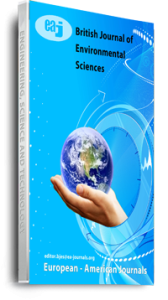The study investigated the impact of logging on non-timber forest products (NTFP’s) in Agoi-Ekpo Forest of Cross River State, Nigeria. Three 20m x 20m quadrats were laid randomly in the sampled plots of different logging intensities (intensively logged (IL), fairly logged (FL) and unlogged (U)) whereby the NTFPs were identified. The data collected were used to compute the number of individual species (NIS), species diversity (SD), richness (R), density (D) and evenness (E). Descriptive statistics were used to describe the result while inferential statistics such as analysis of variance and Pearson’s correlation statistics were used to test the hypotheses at 0.05 significant levels. Results showed that a total number of 2742 individual species of NTFPs with 85 species were recorded. Sacrophrium brachystachyum recorded the highest number of species (519). Of the total number of individual species of NTFPs, IL plot had 12.4%, FL 20.12% while U had 67.5%. The D was highest in the U plot (1.25 species/m2) while the least was observed in the IL plot (0.85 species/m2). The U plot recorded the highest SD (0.9987) and R (234.73) while the least SD (0.9785) and R (43.89) was recorded in IL. Significant variations existed in R (F=4.130; p=0.017), D (F=4.897; p=0.008) and NIS (F= 4.936; p=0.008) among the plots. Furthermore, NIS was significantly correlated with D (r=0.653; p<0.05) and R (r=0.997; p<0.05). The study recommended among others that immediate restoration and rehabilitation of the degraded (IL) areas of the forest should be done through rapid regeneration programmes like afforestation.
Keywords: Agoi-Ekpo Forest, Logging, NTFP, Species density, Species diversity, Species richness, rainforest

